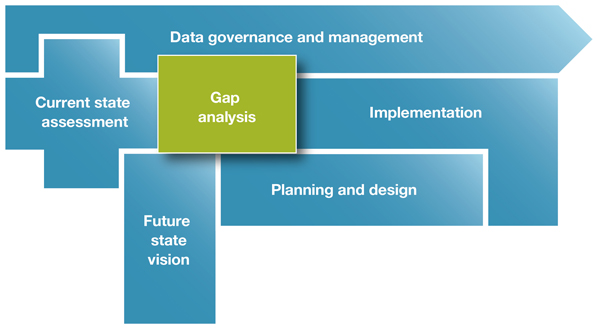The gap analysis phase gives you an opportunity to analyse and quantify gaps between the current and future state designs for improving data interoperability.
A gap analysis needs to provide a holistic view at an architectural, application and/or data level. The results will form the basis of your research to find a solution.
There may be issues with existing systems that you can only discover through detailed examination. During a gap analysis you should consult end users to understand the pain points and issues they have with the current data and applications. For example, some data may not conform to existing business rules and may have some quality issues.
Once the gaps are identified, you can take appropriate action including remediation work as part of implementing the new application and migration.
Before you implement new applications, your agency needs to approve the mapping specifications and supporting documents.
Key participants
The key participants required for a gap analysis would be similar to those required for the current state assessment:
Key participants may include:
- project sponsor
- business and data analyst
- data / information architect
- data consumers
- security specialist
- subject matter experts
- IT developer
- data specialist
- information governance manager
- data champion
- Chief Information Governance Officer


